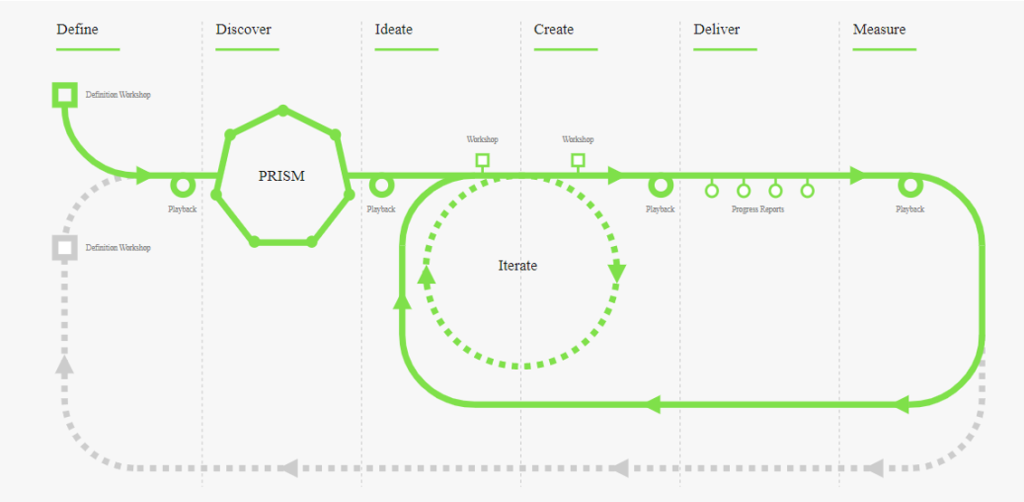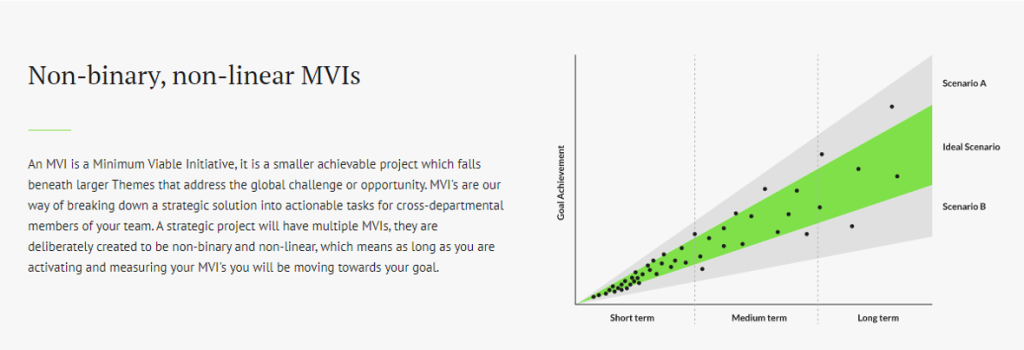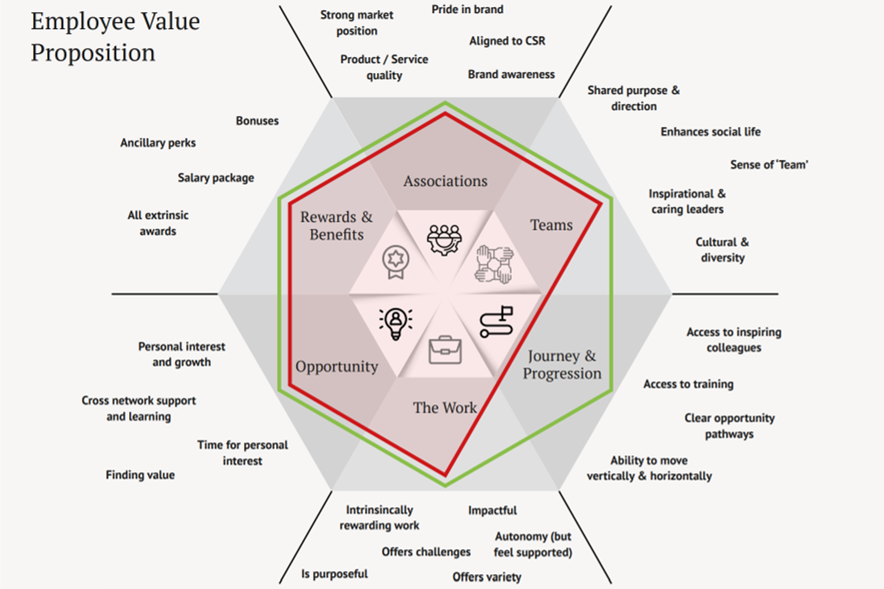After all is said and done, more is said than done. (Aesop) – EVP Part iii
There is a lot of talk about Talent Retention and Attraction, but how many organisations have really dedicated time to designing, implementing, communicating and measuring their EVP.
In order to move from said to done – or at least from said to doing – then a set of steps is useful. We use the Design Process as the backbone to all our projects and this is no exception.

Definition – this phase is about understanding the scope of the requirement and creating clear definitions of success to be agreed by key stakeholders. What are we aiming at, over what timescale, using very clear language to articulate the challenges and opportunity as we collectively see them.
Discovery – once aligned on project vision we move to a Discovery phase, researching all relevant data in a compartmentalized way. In this case the main source of data is gleaned from stakeholder and employee interviews. We use our THRIVE toolset to get a clear view on the existing Employee Value Proposition from both an employer and employee perspective (at this stage we also begin to capture potential gaps in the EVP). We also conduct some desk-based research (simply validating that we still know what great and contemporary looks like in terms of competitor and best practice EVPs).
Ideation – In this phase we work with our customers collaboratively to re-build the data. We run a series of ideation sessions pushing the boundaries of the art of the possible. We usea variety of complementary tools to elicit great thinking.
Create – with all the codified data from discovery coupled with the ideation output we create a Target EVP v1.0 alongside a prioritised list of MVI’s (Minimum Viable Initiatives) in order to achieve this future state.
Deliver – where required, we work with our customers to roll out the implementation plan (although generally we design the MVIs so that they can be achieved by in house resources / teams)

Measure – we have designed a tool for measuring and illustrating employee perception against EVP desired outcomes. The output illustration can be presented at an individual, team / division or at an organisational level.
What it provides is:
- A view on the ‘window of opportunity’ for Talent Attraction
- A picture of where initiatives are suboptimal and work needs to be done (for example, to increase attraction or employee tenures)

Key: Green represents the target EVP (optimal state) Red represents the actual ‘EVP window’. In this hypothetical example it is clear that work needs to be done in ‘Journey & Progression’.
If you want to move from ‘said to done’ on your Employee Value Proposition then please feel reach out and we’ll set up an exploratory meeting. In general terms, I can’t think of many more organisational level priorities for 2021 / 22 given the emerging Talent landscape.
For more information contact our Head of People Practice Jim Marshall at jim.marshall@rokker.co.uk.
Fancy talking to us?
If you would like a free no obligation conversation with one of our consutants then please get in contact.
Contact us